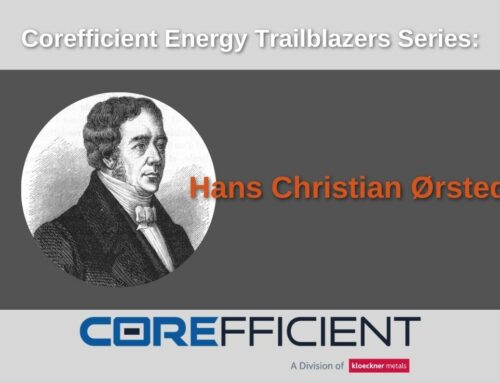What’s In a Name?
“The beginning of wisdom is to call things by their right names.” This Confucian proverb points to a singular truth: the name we give to things must capture their essence.
Years ago, the founders of Corefficient honored this time-tested proverb by choosing a name that captured the truest nature of their company.
A Union of The Past and The Future
Today, the synergy of our past traditions with our environmentally friendly commitments have transformed Corefficient’s ISO 9001:2015 certified manufacturing plants into sophisticated facilities that set the bar for in-process core testing.
There are several ways that energy can be lost in electrical transformer cores. Our testing examines everything from raw materials, to interim processes, to the final test.
This commitment to quality at every step of the process differentiates Corefficient from the competition.
Excellence Begins and Ends With Transformer Core Testing
Anything from deviations in thickness, width, material permeability, magnetic properties, chemical composition, to name a few, can cause energy loss in transformer core, not to mention the safety concerns that may arise.
A multilayered testing process ensures maximum levels of uniformity at each step of the core manufacturing process to ensure that every individual core that comes off the line will be the best electrical transformer core on the market.
Key Steps During Electrical Core Testing
- It is vital that all electrical steel is tested before being laminated for core formation. The permeability of the raw material that makes up a transformer core is directly related to the core’s energy efficiency. For this, Corefficient uses Epstein testing:
Epstein Testing: Electrical steel is measured for core loss and permeability using a Brockhaus MPG 200 automated test involving: system Epstein test frames, and multiple Tesla and frequency inputs based on an ASTM A717 test method.
2. When electrical losses occur in the core (rather than in the coils) the losses are called no-load losses. In order to maintain the highest energy conservation standards by reducing no-load losses in the core, Corefficient uses Single Sheet Testing:
Single Sheet Testing (SST): Each coil of electrical steel is measured for NLL (no load losses) and permeability using a modern SST. This equipment is capable of measuring domain-refined electrical steel.
3. The chemical nature of materials must maintain a uniformly high quality to assure energy conservation. A chemical analysis can give insight into a material’s punchability, temperature stability, weldability, insulating ability, and fabricability. For this Corefficient uses Franklin Testing:
Franklin Testing: A unique method of testing single strips of flat-rolled electrical steel for surface insulation resistance under predetermined voltage, temperature, and pressure conditions.
- Air spaces within coils in electric cores create load loss and waste energy. Properly created coils have no edge tapering and the thickness and width are uniform. To test for uniform coils, Corefficient uses dimensional testing:
Dimensional Testing: Each coil of electrical steel is measured for variations in material thickness and width based on an ASTM A971 test method.
Results
When all is said and done, the meticulous examination of every core part during multiple steps in the manufacturing process guarantees that every core that comes off the line will live up to Corefficient’s name and tradition. This care is what ensures that Corefficient differentiates itself in the electric core market.
About Corefficient – Corefficient is an energy-efficient transformer core company committed to adding value to their transformer core products combining experience and success in the fields of transformer core engineering, transformer core design, magnetic core expertise, cold-rolled steel, grain-oriented steel, electrical steel, and – most importantly – customer service. Contact Corefficient’s sales engineer today at: 1 (704) 236-2510.











